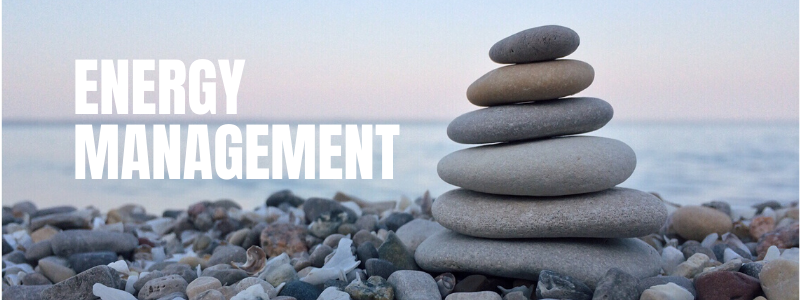
Many people struggle with energy imbalances that keep them from functioning optimally, especially when it comes to exercise. I’m not just talking about caloric energy imbalances, but boredom, nervous energy, and hyperactivity. Regardless of what energy imbalance your clients may struggle with there are techniques that you as a trainer can teach to help them cope with energy highs and lows during a training program.
One approach is to implement cognitive techniques. There are cognitive techniques for the many different energy imbalances clients may face.
The Bored or Tired Client
We’ve all had clients that either tired and don’t have a desire to exercise or feel bored and indifferent about exercise all together. For these clients, it will be helpful if you have them identify what type of boredom they are feeling and identify a correlating strategy to eliminate their boredom.
- Indifferent – This client is the inward type. They may even see cheerful, but not much gets them excited.
Fix: Work to find more engaging ways for them to exercise rather than “tuning out” and just doing what you tell them to do. Some things you can try are creating an exciting and energetic environment, changing warm-up activities each session, encouraging the client to focus on a goal or challenge in front of them.
- Calibrating – This person’s mind can wander, but the good news is they’re open to suggestions and really just need you to help them focus and get motivated.
Fix: Help your client set attainable goals that they can achieve on a daily or weekly basis (exercise frequency, hydration goals etc.). Give them a habit tracker that lets them see the progress they are making on a regular basis.
- Searching – This person is unpleasantly restless, thinking about doing some other activity. A client is more likely to feel this way before a training session. This could trigger them to cancel a session or delay exercising on their own.

Fix: Encourage them to set alarms, have exercise clothes laid out, and mark exercise sessions on their calendar. A friendly reminder that you are looking forward to your session couldn’t hurt either!
- Reactant – These clients have a strong desire to escape their boring situation and those responsible for it, evoking negative feelings.
Fix: Encourage these clients to do some mindfulness exercises or breath work to reduce their negative emotions in their own time. Monitor their moods during your sessions and tune in if he or she seems irritable. Keep routines and exercises fresh, and find fun ways to keep your client engaged.
- Apathetic – Apathetic clients may appear to have feelings of helplessness or depression and a lack of positive emotions.
Fix: Make a point to keep every session exciting and novel and to encourage the client to express feelings of gratitude. If your client expresses that they are depressed, encourage them to see a mental health professional.
The Anxious or Stressed Client
Anxiety disorders are the most common mental illness in the U.S. and even if your client doesn’t have a diagnosed anxiety disorder, everyone can experience anxiety and negative stress. Anxiety activates the body’s sympathetic nervous system, so before a body is doing physical activity, the brain is telling the body that it is under stress. For this reason, exercise is very helpful for most people experiencing anxiety because it helps them to break the loop of anxiety in their brain that’s telling the body there is a threat, giving the body an outlet for the anxious energy.
Try these cognitive techniques:
- Gain Understanding – Help your client understand why exercise is an effective way to reduce anxiety and encourage them to assess their feelings before and after exercise.
- Build Confidence – Create opportunities for mastery experience. If your client feels confident about activities throughout their training sessions, this can help limit their anxiety about something that’s hard.
- Communicate Explicitly – When you begin a session it may be helpful to some anxious clients to explain what they will be doing today and that you’re going to walk alongside them through the whole thing. This can reduce their anxiety about the unknown.
The Excited or Hyperactive Client
Excited clients are some of our favorites because they are fun. Excitement is fun, but much like anxiety, excitement triggers physiological responses that can be taxing. Though these clients can be fun, they can be more likely to get distracted, have a low attention span, or may be less likely to remember instructions. Try these techniques:
- Create Structure – Create elements of structure in training sessions by doing things like following a warm-up, workout, and/or cool-down routine that’s similar during each session. Create a start and end time and use alarms as needed.
- Limit Distractions – If possible, train with these clients during less busy hours at gyms and health clubs, or preferably in a private space.
- Planning – Encourage these clients to schedule exercise on their calendars and set alarms so that if they are distracted or forgetful, they have a helpful reminder.
- Written Instructions – If your client is doing a training program at home or on their own, written instructions will be helpful if they become forgetful or distracted. Tools like Workout Labs are very helpful.
Teaching clients some of these cognitive techniques can help them become more successful in adhering to and enjoying a training program and ultimately find a better balance in their day to day life. Remember, as a personal trainer, it is not within your scope to provide mental health advice or counseling, but you can implement techniques like these. If your client needs mental health counseling, encourage them to see a mental health professional.







